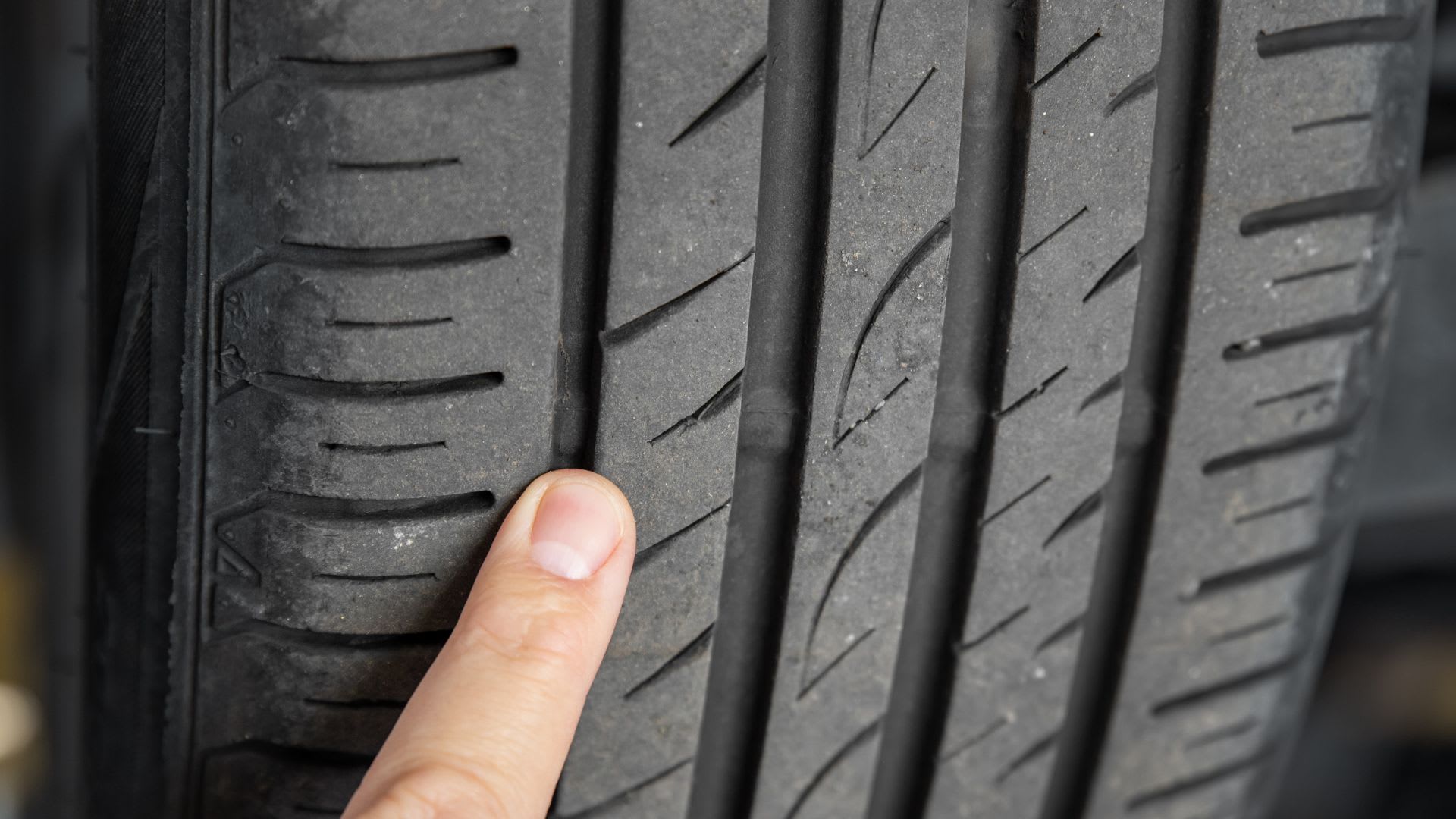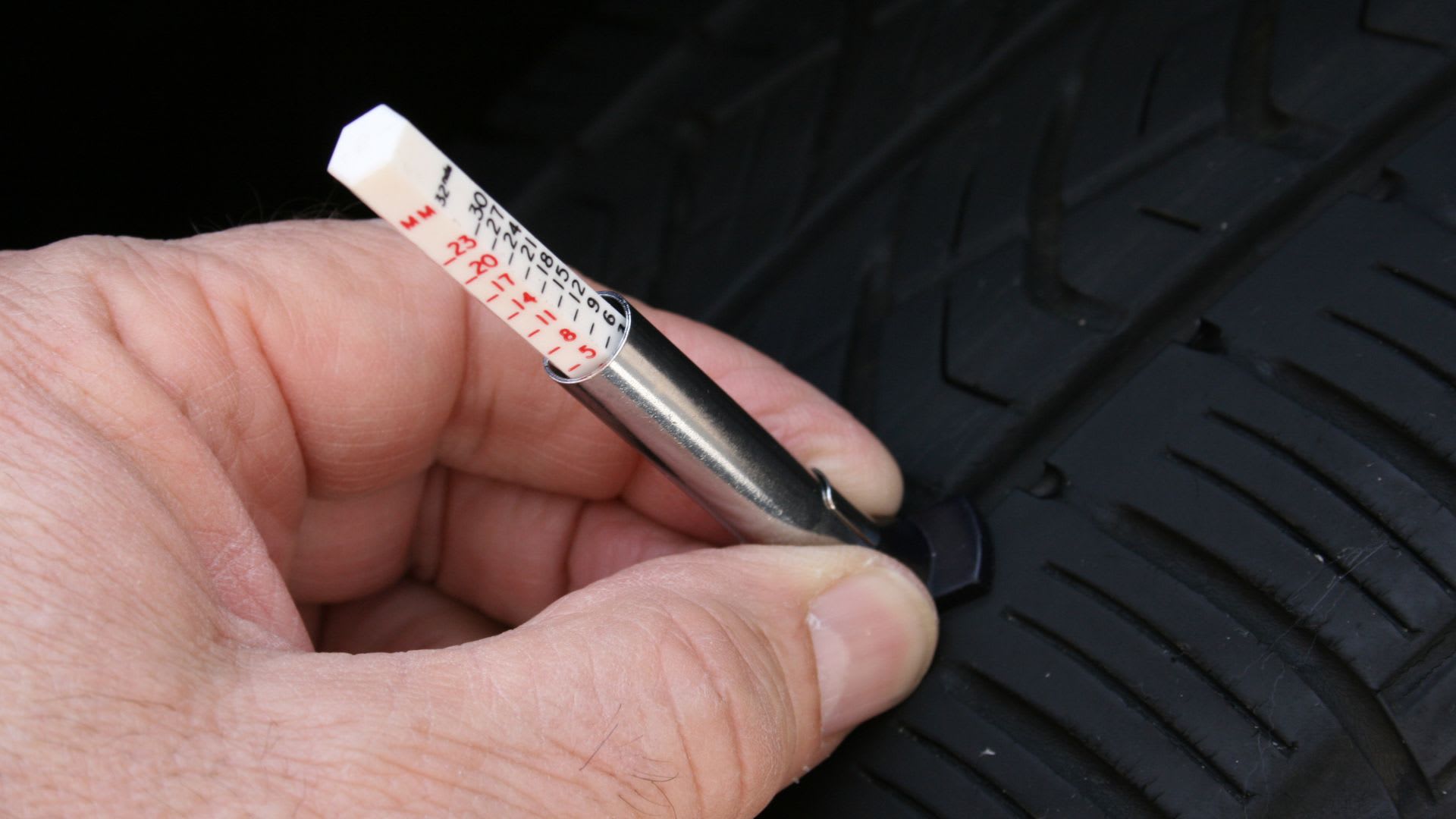Tire Maintenance & Safety
Free shipping
Best price guarantee
Special pricing
Financing with Resolve
Easy returns

Maintaining proper tire tread depth is crucial for ensuring your vehicle's safety and performance on the road. Regularly checking your tire tread can help you identify when it's time to replace your tires, preventing accidents and potentially saving lives.
One simple and effective tool for measuring tire tread depth is a tread depth card. These affordable, pocket-sized cards provide a quick and easy way to assess your tires' condition without the need for more complex tools.
In this article, we'll explore what a tread depth card is, how to use it, and why monitoring your tire tread depth is so important. By the end, you'll have a better understanding of how to keep your tires in top shape and your vehicle safe on the road.
What is a tread depth card?
A tread depth card is a simple, pocket-sized tool designed to help you quickly and easily measure the depth of your tire tread. These cards typically feature a small ruler or gauge with markings that indicate tread depth in 32nds of an inch—the standard unit of measurement for tire tread in the United States.
Most tread depth cards are made of durable plastic or metal, making them resistant to wear and tear. They often include color-coded zones (green, yellow, and red) that provide a visual indication of your tires' condition:
- Green: Your tires have plenty of remaining tread and are safe to drive on.
- Yellow: Your tires are nearing the end of their life, and you should start planning for replacement.
- Red: Your tires are critically worn and need to be replaced immediately to ensure your safety.
Tread depth cards offer an affordable and convenient alternative to more expensive digital tire tread depth gauges. By keeping one in your glove compartment or vehicle tool kit, you can easily monitor your tires' condition and make informed decisions about when to replace them.
Why is measuring tread depth important?
Tread depth is essential for maintaining the effectiveness of your tires, particularly when navigating through wet conditions. Proper tread allows tires to channel water away efficiently, reducing the risk of skidding or losing control on slick surfaces. When tread wears thin, this water evacuation becomes less effective, compromising safety and stability.
A tire's tread not only influences traction but also impacts the handling and braking capabilities of a vehicle. Insufficient tread can lead to longer stopping distances and reduced maneuverability, which heightens the risk of road incidents. By keeping a close eye on tread wear, drivers can ensure their tires remain in optimal condition, thereby preserving vehicle performance and safety.
Most states mandate a minimum tread depth of 2/32 of an inch, classifying any tire below this threshold as unsafe for driving. Regular checks on tread depth facilitate timely tire replacements, helping drivers adhere to legal standards and maintain safe driving conditions. This proactive maintenance strategy is vital for protecting both the driver and others on the road.
How to use a tread depth card
The penny test
The penny test serves as a straightforward method for gauging tire tread without specialized equipment. Place a penny into the tread groove, ensuring Lincoln's head is upside down. If the top of Lincoln's head remains visible, the tread depth falls below 2/32 of an inch, signaling the need for a replacement. This method provides an easy visual indicator of tire condition.
Using the tread depth card
To attain a more accurate reading, utilize a tread depth card. Begin by placing the card into the tread groove with the measurement side facing you. Observe where the top of the tread aligns on the card's scale. These cards are designed with distinct measurement zones:
- Safe Range: Indicates a healthy tread depth, suitable for continued use.
- Caution Range: Suggests the tread is wearing down; consider planning for a replacement.
- Critical Range: Advises immediate action to replace the tire for safety reasons.
Examine multiple areas around the tire to detect any inconsistencies in wear. Such irregularities might point to issues like misalignment or improper tire pressure. Consistent monitoring with a tread depth card aids in maintaining optimal tire performance, ensuring safety and longevity.
What is a healthy tread depth?

Grasping the concept of optimal tread depth is key to maintaining your tires' reliability. When new, passenger car tires are equipped with a tread depth of 10/32" to 11/32", designed to offer the best traction and control across various conditions. This initial depth lays the foundation for robust performance and security.
As tires age and wear, their capacity to manage diverse driving surfaces diminishes. A tread depth of 6/32" still indicates a tire with sufficient life remaining, suitable for most driving conditions. However, as the tread depth declines further, particularly between 4/32" and 5/32", it's prudent to start planning for a replacement. Although these tires might manage dry roads adequately, their efficiency in dispersing water and maintaining grip in wet environments decreases.
When tread depth reduces to 2/32", the tire's ability to safely handle the road is significantly compromised. At this point, replacing your tires is essential to maintain vehicle safety and prevent potential hazards. Being mindful of tread depth not only extends tire life but also sustains your vehicle's overall safety and handling.
How to maximize your tires' lifespan
Extending the life of your tires requires a blend of routine maintenance and attentive driving techniques. This approach not only prolongs tire longevity but also enhances vehicle safety and efficiency. By adhering to a few straightforward practices, you can optimize your tires' performance and durability.
Keeping tire pressure at optimal levels is vital. Tires with incorrect pressure can experience uneven wear, affecting fuel economy and safety. Use a dependable gauge to check tire pressure monthly and adjust it according to the guidelines from your vehicle's manufacturer. Proper inflation ensures even weight distribution across the tire, minimizing stress and promoting uniform wear.
Rotating tires regularly is also essential for maximizing their lifespan. Aim to rotate your tires every 5,000 to 7,000 miles to achieve even tread wear across all positions. This practice helps balance the wear experienced by each tire due to different loading and driving conditions. Additionally, maintaining correct wheel alignment is crucial to prevent uneven wear patterns. Regular alignment checks by a professional can help sustain optimal tire performance and prolong their life.
Incorporating these maintenance practices with regular inspections is key. Regularly examine your tires for signs of damage, such as cuts or punctures, to ensure their integrity. Addressing these issues promptly can prevent more significant problems. Lastly, adopting gentle driving habits, like smooth acceleration and braking, reduces the stress on your tires. By driving carefully, you minimize wear and ensure your tires remain in top condition for as long as possible.
Where to learn more about tires
Expanding your tire knowledge can significantly enhance your driving experience and ensure your vehicle's optimal performance. Numerous resources—both online and in print—offer valuable insights into tire specifications, maintenance tips, and performance attributes. By engaging with these materials, you can unravel the complexities of tire technology and make well-informed decisions tailored to your vehicle's needs.
Consultation with tire specialists is another effective way to deepen your understanding. These experts can provide personalized advice on selecting the right tires based on factors like your vehicle type, driving habits, and local conditions. Their expertise can help clarify aspects such as tread designs, rubber formulations, and load capacities, ensuring you choose tires that align with your specific requirements. Many tire shops and service centers have knowledgeable staff ready to offer detailed guidance and suggestions.
Exploring tire reviews and feature comparisons is also important for informed decision-making. Reviews from other drivers offer practical insights into a tire's real-world performance, longevity, and comfort. By examining these experiences, you can identify patterns and characteristics that are crucial for your selection process, empowering you to choose a tire that meets your expectations and driving demands. This comprehensive approach to learning supports confident and informed tire choices.
Equipping yourself with a tread depth card and understanding how to use it effectively can help you maintain your vehicle's safety and performance. By regularly monitoring your tire tread depth and making informed decisions about when to replace your tires, you can ensure a smoother, safer ride for you and your passengers. When you're ready to shop for new tires, we invite you to explore our wide selection at SimpleTire, where we make it easy to find the perfect tires for your vehicle at the best prices.
Ready to find the perfect tires?
Search By